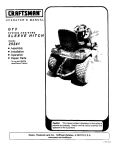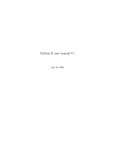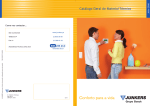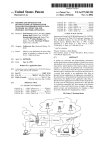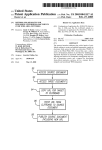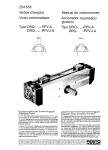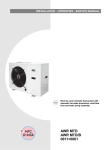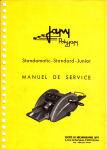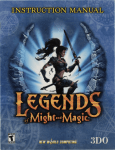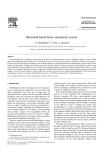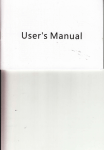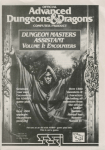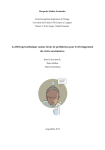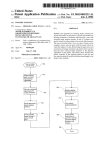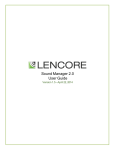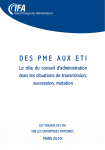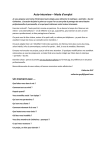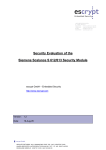Download Method and apparatus for publishing hypermedia documents over
Transcript
US006393469B1
(12)
(54)
United States Patent
(10) Patent N0.:
Dozier et al.
(45) Date of Patent:
US 6,393,469 B1
*May 21, 2002
METHOD AND APPARATUS FOR
PUBLISHING HYPERMEDIA DOCUMENTS
5,557,730 A
5,708,825 A
*
*
9/1996 Frid-Nielsen ............. .. 345/839
1/1998 Sotomayor .......... .. 707/5011
OVER WIDE AREA NETWORKS
5,724,595 A
*
3/1998 Gentner ................. .. 707/501.1
.
-
-
(75) Inventors‘
.
I{?ZlSe;’nS(i)31Z$;g_e¥)rag§eW‘
3
a
5,727,156 A *
3/1998 Herr-Hoyman et al.
5,771,355 A
6/1998
*
5,870,552 A
McKee, Santa Barbara; James G.
Davidson, Santa Barbara; Karen
709/219
..................... .. 709/232
707/5011
'
2/1999 DoZier et al. ............. .. 709/219
OTHER PUBLICATIONS
Brady, Woodside, all of CA (Us)
_
KuZma
5,778,398 A * 7/1998 Nagashima et al.
a
Long, Santa Barbara; Douglas M-
_
*
Vatton, I, “Amaya—W3C’s Browser/Editor”, WWW.W3.org/
_
Amaya/, Jul. 1998*
(73) Asslgnee? Amerlca Onhne! Inc» Dunes> VA (Us)
Vatton, I., “Amaya 1.3”, WWW.W3c.org/Amaya/User/NeW,
( * ) Notice:
Subject to any disclaimer, the term of this
Jul‘ 1993*
patent is extended or adjusted under 35
“Publishing on the Web”, B. Rousseau, 1995 Cern School of
U_S_C_ 154(k)) by 0 days
Computing, Proceedings (Cern 95—05), 1995 Cern School of
Computing, Proceedings, Arles, France, Aug. 20—Sep. 2,
This patent is subject to a terminal dis_
Claiimm
1995, 1995 Geneva, SWitZerland, Cern, SWitZerland, pp.
279—293, XP000578592.
Claris, “MacProjectII Users’ Guide,” Claris Corporation,
( 21 )
(
22
App 1, No; 09 /204 , 745
-
)
_
Fld.
D
16
EC
M ountam
' V'1eW, CA, 1986 , Chp
a ters 14pp
— ,
. 1 — 138 .
Hughes ’ Kevin ’ “Entering the World—Wide Web: A Guide to
.21998
’
Cyberspace,” May, 1994.
Related [15- Application Data
(63)
Berners—Lee, Tim, et al., “The World—Wide Web,” Commu
nications of the ACM, Aug., 1994.
Continuation of application No. 08/412,981, ?led on Mar.
28, 1995, now Pat. No. 5,870,552.
(List continued on next page.)
(51)
Int. Cl.7 ........................ .. G06F 15/16; G06F 17/24
(52)
US. Cl. ................... .. 709/219; 709/218; 707/501.1
Primary Examiner—Zarni Maung
Assistant Examiner—Jason D. Cardone
(74) Attorney) Agent) or Firm—Fish & Richardson RC,
(58)
Field of Search ............................... .. 709/218, 219,
(57)
709/203’
The present invention addresses the critical needs of pub
’
(56)
’
’
References Cited
U.S. PATENT DOCUMENTS
4,817,050
5,091,849
5,241,671
5,267,351
A
A
A
A
3/1989
2/1992
8/1993
11/1993
ABSTRACT
Komatsu et al.
Davis et al.
Reed et al.
Reber et al.
5,307,456 A
4/1994 MacKay
5,500,929 A
5,530,852 A
5,537,546 A
3/1996 Dickinson
6/1996 Meske, Jr. et al.
7/1996 Sauter
’
’
lishers seeking to create and publish hypermedia content in
electronic form across the Wide area networks (“WAN ’s”)
such as the World Wide Web. ToWard the end, a client-server
development platform is provided for handling the important
functions of document authoring, content-based indexing
and retrieval of documents, management and control of
proprietary assets, and a support for developing form-driven
interactive services, all in a manner that is uniquely and
seemlessly WAN -integrated.
42 Claims, 11 Drawing Sheets
ACCESS SOURCE DOCUMENT
ACCESS TARGET DOCUMENT
94\_ COPY URL FOR TARGET
r0 cup/70m
PASTE URL FROM
CUPBOARD 7'0 SOURCE
DOCUMENT
h PUBLISH sou/e05 DOCUMENT
INCLUDING NEW URL
US 6,393,469 B1
Page 2
OTHER PUBLICATIONS
Baker, Steven, “Hypertext Browsing on the Internet,” UNIX
Review, Sep., 1994.
Gunn, Angela, “Power in Pictures: Easier Than It Looks,”
“Cover Story: Electronic Publishing,” PC MagaZine, Feb. 7,
1995, pp. 110—196.
Cortese, Arny, et al., “Cyberspace,” Business Week, Feb. 27,
Computer Shopper, Nov., 1994.
1995, pp. 78—86.
McArthur, Douglas C., “World Wide Web and HTML,” Dr.
Dobb’s Journal of Software Tools, Dec., 1994.
Lewis, Peter H., “Business Technology: Prodigy Leads Its
Mar. 20, 1995, pp. 43—44.
Marriott, Michel, et al., “Super Cyber Surfers,” Newsweek,
Peers Onto the World Wide Web,” The New York Times,
Veljkov et al.; Pocket Guides to the Internet:vol. 2: Trans
Jan. 18, 1995, Sec. D, p. 7, Col. L1, “Business/Financial
ferring Files with File Transfer Protocol; ISBN
0—88736—944—8; Meckler Corp., Westport CT USA; pp.
11—17, 1994.
Des ”.
Flynn, Laurie, “The Executive Computer: Browsers Make
Navigating the World Wide Web a Snap,” The New York
Times, Jan. 29, 1995, Sec. 3, p. 6, Col. 1, “Business/
Boutell, Thornas, “World Wide Web Frequently Asked
“San Francisco Reservations,” Internet MagaZine, No. 2,
Japan, Dec. 18, 1994, pp. 126—127.
Questions,” World Wide Web FAQ, Jan. 23, 1995 , resides on
the World Wide Web on Sunsite.
* cited by eXarniner
Financial Desk”.
U.S. Patent
May 21, 2002
Sheet 1 0f 11
US 6,393,469 B1
PRIOR ART
15 ____ "555
A“_____
.__
|
i_I _____________
20b
'
'1
5
i
i
i @QW :a
g
i100 SERVER
:
;
SERVER 101,1
:
i
i
:
a
I
L ____________ __ i
C?
a
1
l _____________ __5
<PRO70COL>
30
I- ____________ n 1
i _____________ ~_I
1
i
:
:
510a SERVER
5
E
SERVER 10/75
i
'
i
i
i
l
5
l
200
1
;
|
i
l
Cg 2:) i
ZOn
I
A TYPICAL WEB "HOME PAGE”
42\ ACME COMPANY
HOME PAGE
44\
r
FIG. 2
ACME “A
_
_
_
_
_
_
_
_
_
_
_
_
-
_
_
_
_
_
_
_
_
_
_
_
_
_
_
_
_
_.
_-.
460$- CORPORATE INFO.
:
46b\§.o SUBSCRIBE r0 ouR MAILING usr E
1
PRIOR ART
48-’““
CLICK ON A BULLET ITEM
——
U.S. Patent
66
May 21, 2002
CPU
J8
\
USER
1/0
Sheet 2 0f 11
56
I
CPU
J8
\
USER
SI0RAcE
62
US 6,393,469 B1
I/O
~
I
SIORASE
52
\ 0RERA II/vc
\ 0PERAIIN0
SVSIEM
SVSIEM
60
50
\ cLIE/vr
\ SERVER
SOFTWARE
SOFTWARE
cLIE/vI 20d
SERVER 20d
90
k4 ACCESS SOURCE DOCUMENT
92
ACCESS SOURCE DOCUMENT
J0
AccESS IARSEI DOCUMENT
94\ COPY uRL E0R IARSEI
ACCESS TARGET DOCUMENT
VIA HYPERMEDIA LINK _\ 52
I0 CUPBOARD
9L
EON TARGET DOCUMENT “L84
PUBLISH IARSEI DOCUMENT
AS REVISED
H6. 50
PASIE uRL ER0M
CUPBOARD TO SOURCE
DOCUMENT
95
'\
85
L PUBLISH S0uRcE DOCUMENT
INCLUDING NEW VRL
FIG. 5b
U.S. Patent
May 21, 2002
Sheet 3 0f 11
US 6,393,469 B1
FIG. 4
755T
_Edit
Elements
L ‘Elements
Format 100! Browse lVindow l_-l_elp
Li
P76
Tools I
New MiniWeb
New P098
QPeYM
Bet Attributes...
Borizontal Rule
Forced Line Break
Bhow HTML...
NOViLlLIkS...
?heCk Links“
QlOSe
Link".
Describe Page...
gove
Save A8“
Anghor...
image...
Search Seq/er...
Server Administration >
Print Setup..-
Image Map...
Breferences
Er'nt'"
Exit
_L_Jnlink
Belete File...
l___
Browse |"78
‘___
Edit |"74
Format
77
Bndo
Bernove Format
P
Backward
Redo
Cull
QOPY
Baste
Special Style
Beading
Baragraph
Lists
>
>
>
)
EON/0rd
Stop
Reload Page
Qobal History...
Cle_ar
Eorms.“
Bot List...
Select All
Copy LJAL
Paste UAL
ghow Border
Btyle Sheet...
Add To Hot List
find/Repace...
Find Negt
l
‘ Window
I
lile
Bascade
Arrange Icons
1 MiniWeb:<Location>
Z MW<1>2 Page <1>
'
Help I
Help...
lutorial...
Tech Support...
About NaviPress...
U.S. Patent
700{_Eile
May 21, 2002
Edit
yiew
Kama-ti;
Sheet 4 0f 11
Iool
Browse
iviéwéif;
New Miniweb
?ew Page
Qpen'"
US 6,393,469 B1
l/indow
gem Up
global History...
Zoom in
Zoom Qut
?ot List...
Qlose
§ove
Save As...
,
1
twp-(10mg;
Cu_t
Describe Page...
lite
_Qopy
Easte
Search Seryer...
Server Adminstrotion P
Qoscode
Armnge Icons
BrefefenCeS
_1 MiniWebz<Locotion>
Clegr
H?
Copy QAL
De|ete___
Paste UAL
*
P
Z MW<t>z Page <1>
‘—————
Set Stgtionor,
.,
FgHeip‘ki
Help...
l40\.
CRBUE NEW TABLE
.
lutonol...
Tech Support...
742\ GENERATE CORRESPONDING
IEMPLATE FORMS
About Novipressm
_
F/G. 6
744\
ACCESS THE FORM
/45\
FILL-IN FHE FORM
/48\
SUBMIT THE row
'50\
PROCESS THE FORM
H6‘
9
U.S. Patent
May 21, 2002
Sheet 5 0f 11
US 6,393,469 B1
FIG. 7
100{ Eile
M1 mw
Edit
\[ew
Page
Open
Home Pagc:
I
Iools
Import
Erowse
SaveAs
V_V|ndow Help
Stop
Ilease title this page. (Page 1 in NW3)
__
110al%
foompe
1 l0b
|_Y_|
A
'
—
K A
form-handler navisofLcom
A
<1
U.S. Patent
120
May 21, 2002
Sheet 6 6f 11
FIG. 80
W
70{ Elle Edit Elements Fgrmat Iools growse
Cut
Copy
US 6,393,469 B1
Paste
Describ Search Smart
Locati on;
Title:
Back
Fwd
?elp
Stop
http://gore .navi soft .com:8001/reci pes/ri ce-beans-grai n: IV]
[Iwna Rice Risotto
water is evaporated (about 40 mins.)
A
-
'
Cut the chicken into chunks, cut the onion into slices, and cut
both the white and green parts of the leek/spring onions in to slices.
-
Heat the butter/narge/oil, and brown the chicken one minute. Add
the onion slices and cook one minute, add the cashews and cook one minute,
then add the leek (or whatever) and cook one minute (surprise, surprise....)
Add the rice and toss through, then slosh in the Sherry, salt
and pepper.
Serve with a green salad... Nice and light for a hot day
Mahlzeitl
122
An Aussie in exile in Austria
124
Suggested Anchors:
LCarey Schnell-wright
Carey SCHNELL
Ill
J
lEE-J
l26~\ Wild Rice Risotto
An Aussie
""130
da Stlva
_
ieek
'4'
@P 132
‘a
ll‘]
Potential Pages For Selected Anchor:
[MarJoram Potato Casserole
128\\ Spicy Grilled Chicken and Potatoes
IE]
V
<11
Il>
|<1|
Il>l
U.S. Patent
May 21, 2002
US 6,393,469 B1
Sheet 7 0f 11
16. 8b
120‘
70{ Elle Edit Elements Fgrmat Iools ?rowse
Help
[:1
Cut
EU H‘:
&> E7 9% <1<
W
I
Paste Descrlb Search Smart
Back
Fwd
Stop
Location: ?http: //gore.navisoft.comz8001/recipes/rice-beans-grainzlY"
Copy
Title:
Iwna Rice Risotto
]
Cut the chicken into chunks, cut the onion into sl ices, and cut
A
both the white and green parts of leek/spring onions into slices.
Heat the butter/narge/oil, and brown the chicken one minute. Add
the onion slices and cook one minute, add the cashews and cook one minute,
then add the leek (or whatever) and cook one minute (surprise, surprise...)
Add the rice and toss through, then slosh in the Sherry, salt
and pepper.
file Edit Elemenls
Format
Iools
Describ Searc
Smart
_Browse
l_-lelp
[:l
Serve with a green salad... Nice
Copy
/122
Paste
Back
Fwd
5WD
Care SchneZl-Wri ht
Mghiy
m
g
126
k
124
K
[Carey SCHNELL
Wild Rice Risotto
Newsgroups: rec.food.recipes
An Aussie
Fm: [email protected]. (Carey SG-NELL)
Subu'ect: Marjoram Potato Casserole
Message-ID:
Organization: IIASA, Laxenburg, Austria
da Stlva
leek
chicken
5:
Date: Tue, 3 Aug 1993 07:41:31 MT
Potency Pages For Selected Anc
Marjoram Potato Casserole
LMBI‘JOI‘GIII Potato Casserole
750 9 potatoes
COLLECTION: Potato Recipes (lon
‘ Spicy Grill Chicken and Potatoe
COLLECTION: Risottos:(medium lo
F
F
TitlezllMarjoram Potato Casserole
Suggested Anchors:
salt
lunch of fresh marjoram (dried otherwise)
250g cream
2 egg yolks
freshly ground pepper
l?l________
40g butter
75gham
134-)
I
U.S. Patent
May 21, 2002
Sheet 8 0f 11
US 6,393,469 B1
FIG. 100
160‘
70{ Eile Edit Elements Fgrmat Iools Browse
Cut
1|
Copy
Paste
Descrtb Search Smart
Back
?elp
Fwd
StOP
Location: "Ihttp://navisoft.com:8001/NS/GetNewTab1eForm
1v“
Ti 1;] e: New Tab] e
When finished, press the Create Table button to create the new table. I 164
Tabte Description:
ICustomer Feedback For-m1
Tab'le is Searchable:
I
—
Cotumn 1:
\
"we
WK @151 >162a
Description: lCustomer‘ NameI
not nuH:
El
unique:
I:
I
index:
[I]
J
@@
Descriptiom |E1ectronic Mai'l AddressI
not nut]:
Coiumn 3:
El
unique:
E1
index:
I
U
U.S. Patent
May 21, 2002
Sheet 9 0f 11
US 6,393,469 B1
FIG. 70b
7(){ Elle Edit Elements Fgrmat Iools Erowse
?elp
M EU EEK>$W<<1 w I
Cut
Copy
Paste
Descr'lb Search Smart
Back
Fwd
Stop
@ Location: I p : //nav1' soft . com:800l/NS/GetEntryForm/comment$4117]
@
T1't1e: IEntry Form for Tab1e: comments4
A
N 0
Enter Data for Table c0mments4 (Customer Comment Form)
168
when done ?lling in the ?elds below, press the "Euler" bullon in insert your data inlo the Ilalabase.
J
custname [I
k166i:
(Customer Name)
e_ma1‘1
[I
|r166b
(E'Iectrom'c Mai] Address)
address [I
P166c
(Ma? address)
phone
IT
<1!
II
1
2
‘I
L
|
ll
L
__
\
v
I
ll>
I]
U.S. Patent
May 21, 2002
Sheet 10 0f 11
US 6,393,469 B1
FIG. 70c
7 0{ Eile Edit Elements Fgrmat Iools
_B_rowse
?elp
X EU ag§??$<<1 W I
!:|
L Cut
Copy
Paste
-
Oescr?: Search Smart
Back
Fwd
Stop
Location:
T1't1e: Ift
IEntry
.com:8001/test/support/coments4.htmI
Form for Table: c0mments4
A
Company
ogn
BJPG
Send Us Your Comments!
172
We want to hear from you. Please ?ll in yuur name, address, phone number, and comments, press
J
Enter lo send us your comments.
Customer NameII
_
1/1706
f‘ 17Gb
e_ma? Address II
address
<1|
II
I
I
170C
'5
ll>
II
U.S. Patent
May 21, 2002
Sheet 11 0f 11
US 6,393,469 B1
FIG. 70d
70{ file _E_dit Elements Fgrmat Iools Erowse
?elp
X
EU EQIWE>§W<< >l>
I
Cut
C51] Paste Describ Search Smart Back
Fwd
5WD
Location: /gor‘e.navisoft.comz800l/NS/GetSearchForm/commentsliIIYI
Title: ISearch Form for Tab'le:
comments4
A
N 0
Search
Search Telecommunication (Customer Comment Form)
Help
Select:
174a
176
\\~-(Customer
custname:
Name)I
~- e-mai]:
174C
I
(Eiectr'onic Mail)
~ I address:
I
I
'
I
(Maii address)
I phone:
I
I
(Teiephone Number)
I
<1]
||
_
\F'] |
V
|l>>
"
ll
US 6,393,469 B1
1
2
METHOD AND APPARATUS FOR
PUBLISHING HYPERMEDIA DOCUMENTS
OVER WIDE AREA NETWORKS
elsewhere on the Internet will automatically be generated
and dispatched by the client’s server to the appropriate
Internet server which “hosts” the linked document. The
linked material will then automatically be retrieved and
ultimately displayed on the client. Http further includes the
CROSS-REFERENCE TO RELATED
APPLICATIONS
Hyper-Text Markup Language (“html”), which may be used
to specify a certain layout structure for Web documents, e. g.,
This application is a continuation of US. patent applica
tion Ser. No. 08/412,981, ?led Mar. 28, 1995, now US. Pat.
specifying subsections of the document as a title, image, list,
etc. Html speci?cations are interpreted by a client’s browser,
resulting in an appropriate display on the particular client’s
computer platform. A survey and discussion of many popu
lar Web browsers is provided in the Feb. 7, 1995, issue of PC
No. 5,870,552, which is incorporated by reference.
FIELD OF THE INVENTION
The present invention relates to the ?eld of authoring,
publishing, and managing electronic hypermedia documents
across distributed, wide area networks such as the World 15
Wide Web.
Internet and the Web, is how best to facilitate the authoring
and publishing of hypermedia documents on the Web. Many
large and small publishers of content—such as newspaper
BACKGROUND OF THE INVENTION
and magaZine publishers, for example—wish to make their
The distribution of information is being revolutionized
content available in on-line form to subscribers. However,
before our very eyes. Wide area networks (“WAN’s”),
this opportunity presents a major bottleneck, because high
quality development platforms and authoring tools have not
yet been developed that adequately facilitate the authoring
notably the Internet, are assuming the role of “information
superhighways” and are distributing electronic embodi
ments of mail, textbooks, magaZines, advertisements, and
even audio and video clips around the world. Herein, the
term “document” denotes and includes any and all such
25
electronic content, generically.
FIG. 1 conceptually illustrates the basic architecture of a
“client-server” WAN like the Internet. Servers 10a—n form
the backbone of the WAN. The servers are interconnected by
a telecommunications infrastructure and exchange informa
tion in the form of one or more recogniZed protocols, such
as protocol 30. For example, in the case of the Internet,
and publishing of hypermedia on a distributed WAN like the
Web. A summary of the primary limitations of current
Internet and Web publishing tools follows:
1. Current publishing tools are typically not fully
network-integrated. Browsers or other “cruiseware” help
users view existing WAN content, but do not generally
support authoring of new WAN content. Current authoring
tools, on the other hand, are typically either “stand-alone”
local products, or at best offer a limited bridge to WAN
access such that authoring and WAN navigation remain
network protocols include FTP, for ?le transfer, and Telnet,
for remote log-in. Each server effectively represents and
Magazine (“PC Magazine”), at pages 173—196.
An important challenge that must be addressed, especially
in light of the burgeoning expansion and popularity of the
35
fundamentally non-integrated processes.
the ultimate sources and targets of underlying information,
For example, in order to publish a document on a WAN,
it is typically necessary to edit documents in a local storage
while the servers dispatch and receive messages across the
context using authoring tools, and thereafter manually copy
WAN in compliance with network protocols. Each client
the documents to a WAN server. Manual copying is often
may correspond to a single user’s computer, or may itself be
tedious and inconvenient, especially where a publisher fre
quently publishes a large quantity of content from diverse
sources, including text ?les, graphics images, video and
sound clips, etc. Yet, current authoring tools generally
provide little assistance with this chore.
The non-integrated nature of current authoring tools pre
services its one or more “clients.” Basically, the clients are
hierarchically complex and may comprise a further sub
network or collection of numerous computers, such as the
well-known, proprietary sub-networks of America Online,
CompUServe, and Prodigy. In this way, information of any
kind can be distributed worldwide in electronic form at 45
telecommunications speeds.
sents other difficulties and limitations as well. For example,
One of the most rapidly expanding aspects of the Internet
is the World Wide Web (the “Web”). The Web is comprised
of those Internet servers (and their clients) able to support
the Hyper-Text Transfer Protocol, better known as “http.”
The Web allows documents and graphical materials to be
interlinked by means of “hypertext” (or more generally,
it is not generally possible to “open” multiple WAN docu
ments for editing and to transfer text, images, and URL’s
ently done with typical word processors for local computer
documents. As another example, current Web authoring
tools generally do not provide full WYSIWYG (“What You
hypermedia) document elements. When a user utiliZes a
See Is What You Get”) feedback as to html markups and
among those documents in the seamless fashion as is pres
cursor control device to select and “clic ” on a hypermedia
item in one document, a related document will automatically
be accessed as identi?ed by that link. For example, FIG. 2
illustrates a simple example of a popular Web document
known as a “home page.” Home page 40 includes title 42,
55
graphic image 44, instructional text 48, and list of bullet
items 46a—c. Selections 46a—c are each hypertext. A Web
hypermedia item is actually encoded with a Uniform
Resource Locator (“URL”) tag, which literally addresses a
document located on a remote network server. If a client of
hypermedia links. In other words, the creation and editing of
documents is typically performed in a purely local context;
html and URL codes must then be separately tested in a
serial fashion, by loading the document into a WAN browser
or the like. This serial, iterative process is highly inef?cient.
2. Current WAN publishing tools provide little assistance
with managing collections of documents. Although the
World Wide Web is famous for supporting hypermedia
document links, current tools provide scant support for
maintaining and operating on collections of related docu
a Web server is equipped with suitable “browser” software,
ments as a group. Much progress is needed in this area. For
then a user of that client can point and click on any one of 65
example, an integrated publishing environment should pref
erably allow users to visually navigate through collections of
the hypermedia items within home page 40, and an http
request to view the associated, linked content residing
interconnected documents; to upload, download, and trans
US 6,393,469 B1
3
4
port collections of documents from one WAN location to
“modes” or interfaces. Thus, broWsing and editing of WAN
documents is truly integrated. A related feature of the
another as a group; and to set access privileges or other
attributes for a WAN collection as a group. Current tools
invention alloWs convenient transfers of content and/or
hypermedia links among a plurality of WAN documents,
such as by “cut and paste” or “drag and drop” copying.
Another related feature provides immediate execution and
feedback for any display instructions added to the document
using a standard WAN mark-up language.
In another feature of the present invention, at least tWo
generally fall far short of these objectives.
3. Current publishing tools provide little assistance With
content-based indexing and retrieval. Current navigational
tools, such as broWsers, provide very little assistance With
systematically organiZing and searching the information
content contained Within the numerous sites comprising a
WAN documents residing on the same or different WAN
servers are accessed, and a hypermedia link addressing one
netWork like the Internet. Clearly, as the volume of both
information and traf?c on the Internet continues to explode,
publishers need to be able to make their content available to
subscribers in an intelligently organiZed fashion that facili
tates uniform, content-driven search and access.
4. Current publishing tools provide little assistance With
asset management. For commercial publishers of proprietary
of the documents is inserted into another. Once again, the
processes of accessing and editing are performed using a
seamless user interface on a client computer. In a related
15
guage processing techniques, and the link to be inserted is
interactively chosen from that list.
Another feature of the present invention provides a
method for publishing and managing a collection of related
material like neWspapers or periodicals, asset management
is critical. In other Words, publishers need to be able to
control and limit access to their WAN documents, and to
documents on a WAN. The related documents to be included
keep track of usage for billing and other purposes. Yet,
currently available tools for WAN publishing generally
ignore this area almost completely.
5. Current publishing tools do not address the creation of
application programs. For on-line netWork publishing to
realiZe its full potential, publishers Will Want to do more than
feature of the invention, a list of suggested target hyperme
dia links is automatically generated using statistical lan
in the collection are speci?ed, and a desired operation (such
as setting access controls or changing location) may then be
performed collectively on each document in the collection,
25
simply dump passive, one-Way content onto the Internet.
They Will Want to provide application programs alloWing
simply by interactively issuing a single command corre
sponding to the operation. A related feature includes hyper
media links betWeen documents of the collection, Which
address target documents relatively to source documents;
i.e., each link address does not specify an absolute address
for the target independently of the source. In another related
netWork users to take advantage of interactive on-line ser
vices such as subscribing to a publication, registering for a
conference, or perhaps even more exotic applications like
feature, elements of the collection including documents and
hypermedia links are graphically depicted using icons and
participating in multi-player games contests. Current net
connecting lines, thereby facilitating convenient, visual
Work publishing and authoring tools largely ignore this area.
navigation and organiZation of the collection.
Accordingly, there is a great need for a neW development
platform for distributed publishing that overcomes the vari
ous limitations described above. This need is especially
35
In a further feature, the present invention includes a
method for providing form-driven interactive services on a
WAN. A form-driven service is developed by creating a
pronounced and important in vieW of the rapid expansion of
template form comprising one or more informational ?elds,
interest in the Internet and the Web, and the tremendous
economic opportunities presently available to publishers if a
database system or other utility program stored on an
as Well as one or more hypermedia links addressing a
suitable development platform can be provided. Recently,
application server. The form-driven service is utiliZed by
?lling in the informational ?elds, and “clicking” or other
Wise signalling on the hypermedia link When ready. In
authoring tools have begun to emerge, Which attack some of
the foregoing problems in piecemeal fashion. See PC Maga
Zine at pp. 110—196. HoWever, there remains a great need for
response, the application server is sent an appropriate WAN
a comprehensive solution to the problems described, and
especially for an authoring/publishing tool that is truly and
message, and processes the form. These steps (except the
fully netWork-integrated.
45
environment, so there is once again no need for users to
sWitch interfaces or request any intermediate copying in
order to perform the process of creating and ?lling in a
SUMMARY OF THE INVENTION
template form and signalling When the form is ready for
We disclose herein a development platform technology
processing.
for publishing hypermedia documents across Wide area
netWorks (“WAN ’s”). This technology supports key pub
BRIEF DESCRIPTION OF THE DRAWINGS
lishing functions including document authoring, manage
ment and publishing of document collections, and support
for database operations and interactive application program
development. These functions are supported in a uniquely
and fully WAN -integrated manner, as described further
55
beloW.
In one feature of the present invention, a WAN document
residing on a WAN server may be accessed via a hypermedia
link, edited, and stored to the same server or any other WAN
server, using a client computer coupled to the same server or
any other WAN server. The processes of accessing, editing,
and storing may be performed using a seamless user inter
face on the client computer. By “seamless” user interface We
mean that users are not required to request additional steps 65
such as intermediate copying or storage of the document
being edited, or to sWitch back and forth among distinct
last step) are performed using a seamless user interface
FIG. 1 illustrates a basic, high-level architecture for a
typical client-server WAN such as the Internet or the World
Wide Web.
FIG. 2 illustrates a simple example of a typical “home
page” document on the World Wide Web.
FIG. 3 broadly outlines a client-server architecture in
accordance With the present invention.
FIG. 4 illustrates a preferred document editor environ
ment in accordance With the present invention.
FIG. 5a illustrates a How diagram for a scenario in Which
WAN hypermedia documents are created and edited in
accordance With the present invention.
FIG. 5b illustrates a How diagram for a second scenario in
Which WAN hypermedia documents are created and edited
in accordance With the present invention.
US 6,393,469 B1
6
5
FIG. 6 illustrates a preferred set of interactive commands
a draft User Manual for NaviPress and NaviServer. The
for Working With a collection of interrelated hypermedia
documents.
FIG. 7 illustrates a preferred graphical interface for orga
reader is referred to the AppendiX for more details regarding
this preferred embodiment, and the AppendiX materials are
incorporated herein in their entirety by this reference.
niZing and Working With a collection of interrelated hyper
NetWork-Integrated Editing
media documents.
FIG. 8a is a screen image illustrating use of the preferred
The present invention enables users to access, edit, and
store documents distributed throughout a WAN, in the
“NaviLinks” facility to generate suggested hypermedia
links.
FIG. 8b is a screen image further illustrating use of the
10
advantageous manner of state-of-the-art, private computer
or local area netWork Word processing tools. In accordance
preferred “NaviLinks” facility to generate suggested hyper
With the present invention, the basic process frameWork by
media links.
FIG. 9 illustrates a How diagram for developing and
Which WAN documents are accessed, edited, and stored is
seamless and is substantially the same as if all steps occurred
running WAN-based, form-driven, interactive application
15
programs in accordance With the present invention.
FIG. 10a illustrates a preferred interface form for adding
“modes” or interfaces in order to access and broWse WAN
documents, to edit them, and to store them.
dance With the present invention.
FIG. 10b illustrates a default template form for adding a
particular customer’s feedback to an indeXed database, in
accordance With the present invention.
FIG. 10c illustrates a modi?ed template form for adding
accordance With the present invention.
FIG. 10d illustrates a template form for searching an
indexed database for particular customer feedback, in accor
dance With the present invention.
required to perform any intermediary doWnloading or copy
ing steps, or to sWitch back and forth among distinct
a customer feedback table to an indeXed database, in accor
a particular customer’s feedback to an indeXed database, in
locally on a private computer. In particular, users are not
As a more concrete illustration of this capability, FIG. 4
illustrates a preferred, menu-driven document editor in
accordance With the present invention. Typically, menu bar
70 Would be displayed continually at the top of a computer
display “Window” in Which a particular document is being
25 edited. “Pull-down” menus, such as “?le” menu 72, are
displayed When a user selects a corresponding item from
command bar 70, preferably using a cursor control device.
For eXample, ?le menu 72 includes commands to “open”
eXisting documents for editing, and to “save” such docu
ments as revised, etc. This general, menu-driven methodol
ogy is of course by noW familiar to those of ordinary skill in
the relevant arts. The present invention enables these capa
DETAILED DESCRIPTION OP THE
INVENTION
bilities to be applied seamlessly across a Wide area netWork.
In other Words, a user can conveniently access, edit, and
Introduction
FIG. 3 provides a broad outline of a client-server archi
tecture in accordance With the present invention, for use in
35 save any WAN document in much the same Way as the user
the conteXt of a WAN such as illustrated in FIG. 1. User’s
residing locally on the user’s private, personal computer.
client machine 20d preferably includes digital computer
facilities including CPU 68, user I/O peripherals 66, and
storage device 64 (including internal and eXternal memory)
storing operating system 62 and client softWare 60. WAN
server 10d, preferably coupled to client 20d through a
high-speed local connection, is equipped With digital com
puter facilities analogous to those of client 20d, and also
Consider a scenario in Which multiple WAN hypermedia
documents are being Worked upon. As indicated in FIG. 4,
edit menu 74 includes “cut and paste” commands alloWing
teXt and other information to be transferred conveniently
betWeen multiple WAN documents. “Cut” and “copy” com
With server softWare 50.
has been accustomed to doing With respect to documents
mands Will typically post to a “clipboard” (i.e., temporary
storage) selected content from any document being edited,
45
As described in much greater detail beloW, client softWare
60 and server softWare 50 preferably share the responsibility
for providing advantageous and innovative electronic pub
lishing capabilities in accordance With the present invention.
While the “paste” command Will insert Whatever content is
currently held in the clipboard into a different document at
a point of insertion selected by the user.
The present invention provides further advantages in the
conteXt of hypermedia WAN documents, as illustrated by the
scenarios described in the How charts of FIGS. 5a and 5b.
With respect to FIG. 5a, at step 80 the user of client
Note that a user of client computer 20d seeking the bene?ts
of the present invention need only have client softWare 60
available on client computer 20d, and all or part of server
softWare 50 available on server 10d (depending on the
computer 20d invokes ?le menu 72 to access a source
particular features desired). The user can then advanta
geously access and publish documents to and from the
remainder of the WAN in accordance With the present
invention, even though other computer systems on the WAN
have not been similarly modi?ed or upgraded.
The inventors are, as of this Writing, in the process of
located on any WAN server. In this eXample, the source
document, such as by “opening” an existing document
55
document, located on the same or any other WAN server. At
step 82, the user accesses the target document by “clicking”
on the hypermedia link using a cursor control device, Which
developing a preferred embodiment of the present invention
including client softWare 60 called “NaviPress” and server
softWare 50 called “NaviServer.” As a supplement to the
detailed description provided beloW, an AppendiX is pro
vided hereWith Which contains illustrative source code,
architectural speci?cations entitled “NaviPress and NaviS
erver: A Client-Server Publishing System for the World
Wide Web” (hereinafter “White Paper”), and eXcerpts from
document contains a hypermedia link addressing a target
65
immediately opens the target document for editing in accor
dance With menu bar 70, preferably in a separate document
WindoW.
At step 84, the user can immediately edit and revise the
accessed target document. This step preferably includes use
of a markup language recogniZed on the WAN, such as html;
elements menu 76 and format menu 77 in FIG. 4 provide
convenient tools for creating and editing html content With
immediate WYSIWYG feedback. The editing step also
US 6,393,469 B1
8
7
preferably includes interactively transferring or copying any
For more details on an exemplary embodiment of the
selected portion of the source document to the target docu
WAN document editing and broWsing environment, the user
is referred to the Appendix, and especially to the draft User
Manual at Chapters 2, 3, and Appendix A. Exemplary source
code for use in implementing this unique environment is
also included in the Appendix.
ment (or vice versa), such as by “cutting and pasting” or by
“dragging and dropping” the selected portion using a cursor
control device. Moreover, the copied portion may include
hypermedia links (URL’s) or other mark-up codes, and any
such mark-up codes Will immediately be active as soon as
inserted into the target document. Because the broWsing and
editing environment is seamless in accordance With the
present invention, these editing tasks can noW be performed
Without requiring users to sWitch betWeen separate interface
Working With Collections of WAN Documents
10
modes or to temporarily doWnload documents into local
storage, as Was traditionally necessary.
Another aspect of the present invention is the ability to
publish, maintain, and otherWise operate on collections of
multiple, related documents as a group. This is an especially
Finally, at step 86, the target document is saved as revised
valuable capability in the context of hypermedia collections,
Where there are explicit links betWeen speci?c, related
portions of documents.
to any WAN server by using the “save” or “save as”
commands of ?le menu 72. Note that server 10d, the source 15
server, target server, and the ultimate destination server of
FIG. 6 illustrates a preferred, menu-driven authoring
the target document may all be the same server, or may all
be different.
environment called “the MiniWeb” for Working With col
In the scenario described in FIG. 5b, at steps 90 and 92 the
lections of related documents in accordance With the present
user of client computer 20d accesses a source document and
invention. Typically, menu bar 100 is displayed continually
a target document, such as by invoking ?le menu 72. The
at the top of a computer display “Window” in Which a
source and target may originally be located on any Wan
particular collection is being operated on. Many of the basic
operations provided by the pull-doWn menus available
servers. At step 94, the “copy URL” command of edit menu
74 is used to post a hypermedia pointer addressing the target
document onto a clipboard for temporary storage. (Recall
25
through menu bar 100 are performed collectively upon the
that “URL” is the term for a hypermedia link on the World
current document collection (or “miniWeb”); in other Words,
Wide Web, as discussed earlier in the Background section.)
At step 96, the “paste URL” command of edit menu 74 is
a single command Will be applied to all members of the
collection, as a group. For example, pull-doWn “?le” menu
102 includes commands to “save” a miniWeb to any speci
used to paste the stored hypermedia link onto a selected
“anchor” item of content Within the source document. At
?ed location in the WAN. When invoked, the command
automatically stores all documents and objects in the col
step 98, this neW document, including the neW hypermedia
link, may be “published” by storing it to any WAN server,
simply by using the “save” commands of ?le menu 72. Thus,
lection to the desired neW (or old) storage site. Preferably,
edit menu 104 includes commands to globally search and
in accordance With the present invention, publishing hyper
media content across a WAN is achieved in a highly advan
35
tageous manner that fully and seamlessly integrates hyper
media broWsing and editing.
As brie?y noted above, the WAN -integrated editing envi
the collection, although this particular command option is
not explicitly shoWn in FIG. 6. Similarly, tools menu 106
performs administrative tasks, such as setting access con
trols (i.e., costs and security privileges), for collections as a
group.
ronment is enhanced by elements menu 76 and format menu
77 Which provide WYSIWYG feedback for html markup
authoring Without any need for users to separately launch a
A related aspect of this invention involves the ability to
broWser program or upload the document being edited.
transport collections of documents interrelated by hyperme
Other, preferred features of the editing environment depicted
in FIG. 4 include WAN broWser menu 78, display options
and preferences, and access to help. Menu bar 70 further
dia links in a convenient manner. Those of skill in the art
45
provides access to various WAN tools and services dis
forWarding address. Thus, moving a collection of documents
interrelated by numerous hypermedia links has been
extremely onerous using prior art technology, since the
asset administration services.
In summary, prior art technology has traditionally sepa
hypermedia links must manually be “?xed” to address neW
locations.
rated betWeen WAN “browsing” on one hand, in Which
WAN documents are accessed and mark-up codes are inter
In accordance With the present invention, one or more
55
address. In other Words, only a portion of the full target
address is given, namely, a portion suf?cient to locate the
loaded to the user’s private local storage, thereafter edited,
and thereafter uploaded back to the WAN. The present
target relative to the source. Preferably, a speci?cation of a
hierarchical directory structure for each collection is main
tained in a separate ?le along With the collection, so that only
invention noW enables users to access WAN documents,
copy content (including hypermedia links and other mark-up
codes) among multiple WAN documents, and execute WAN
mark-up codes, all in a seamless fashion Without requiring
the topmost page in the collection need be tied to an absolute
intermediate steps. Moreover, these capabilities require only
the user’s computer system to include softWare implement
require any modi?cation of other WAN computers.
relative hypermedia links are preferably created among the
documents of a collection. A “relative” link only addresses
its target document relative to the source document’s
diate steps in Which WAN documents of interest are doWn
ing the broWsing and editing environment, and do not
recogniZe that When the target reference of a hypermedia
link is moved, the link is thereby “broken,” much like the
address on a letter to a recipient Who has moved and left no
cussed further beloW, including “NaviLinks” link
generation, form-driven database update and search, and
preted and executed, and document editing on the other
hand, in Which documents are modi?ed. Conventionally,
users must manually sWitch betWeen distinct broWsing and
editing environments or “modes,” and/or perform interme
replace a common portion of content, such as an updated
company logo or URL, shared by many or all documents in
65
address, While other hypermedia links Within the collection
can be made relative and still be interpreted properly.
Sample listings for such a speci?cation are included on the
folloWing pages. Because the links are relative, they do not
need to be modi?ed When the collection is moved.
US 6,393,469 B1
14
13
-continued
Hsumo guy3. gif "
Hsumo guy4. gif "
Hsumo guyS . gif "
"sumoguy6.gif"
"sumochangif"
"sumoleafgif"
Hsumo guy7. gif "
Hsumo guy8. gif "
"fujibrchgif"
"fujimtgif"
"sumobboogif"
"sumofeetgif"
"sumohndsgif"
"sumoarmgif"
" cthulhu. gif"
"icemangif"
"sumochar2gif'l
Apreferred embodiment of the MiniWeb facility that has
been described includes an advantageous, graphical front
end for viewing and navigating Within a collection of
hypermedia documents. FIG. 7 illustrates an example of
such a miniWeb interface. Display icons 110a—n each rep
resent corresponding documents located anyWhere on the
WAN, or anyWhere Within the user’s local storage. ArroW
icons 112a—n indicate hypermedia links betWeen documents,
in the direction indicated by the arroWs. Thus, the miniWeb
display provides an intuitive, graphical vieW of the relation
ship among a collection of hypermedia documents.
ments. A human author can then revieW the suggestions in
a convenient manner, and choose to incorporate, modify, or
discard them.
The NaviLinks facility is preferably integrated along With
25
NaviLinks facility for assistance in creating hypermedia
The graphical interface of FIG. 7 is preferably displayed
in a separate WindoW of client computer 20d, alongside
document editing WindoWs in accordance With FIG. 4. Users
can preferably use the miniWeb WindoW as a short-cut to
access desired documents Within a collection by simply
the publishing tools described above, and as illustrated in the
“screen shots” of FIGS. 8a and 8b. Both ?gures depict
document editing WindoW 120, including menu bar 70 in
accordance With the teachings of FIG. 4 and the earlier
discussion herein. A document entitled “Wild Rice Risotto”
(evidently a recipe) is currently open Within WindoW 120. In
the example shoWn, the user has already invoked the
35
“double-clicking” on the corresponding icon in the miniWeb,
or by “dragging and dropping” an icon from the miniWeb
onto a document editing WindoW. Moreover, the precise
appearance of icons and connecting arroWs preferably indi
links from the recipe document to related documents.
NaviLinks WindoW 124 is thus shoWn overlapping on docu
ment editing WindoW 120. WindoW 124 displays list 126 of
suggested anchor items. An “anchor” item is an item of
content Within a source document encoded as a hypermedia
link; users “click” on anchor items to bring up linked target
documents. Thus, the highlighted entry in list 126 corre
sponds to item 122 in the recipe document, namely, the
recipe author’s name (Carey Schnell-Wright). NaviLinks
WindoW 124 also displays list 128 of potential target docu
ments for the currently highlighted anchor item. The lists of
suggested anchor items and potential targets are generated
cates the nature or state of the corresponding document or
link. For example, icon 110i represents a sound ?le, While
icon 110b is a hypermedia “Web” document, as suggested by
the appearance of those tWo icons. Further, the color and
automatically, preferably using statistical language process
shading of icons and arroWs may indicate such states as a
modi?ed and unsaved document, or a relative or absolute 45 ing techniques such as provided in the Xerox Lexical
Technology (“XLT”) package commercially available from
address link. For more details regarding the graphical inter
face of FIG. 7 and its preferred uses, the reader is referred
to the draft User Manual in the Appendix, and particularly
chapters 4 Appendix B thereto. Once again, source code
the Xerox Corporation.
Because of the integrated nature of the tools described
herein in accordance With the present invention, the process
included in the Appendix provides exemplary means for
implementing the miniWeb facility We have described.
of exploring and selecting among the suggested anchor
items and corresponding hypermedia links shoWn in FIG. 8a
Automated Authoring of WAN Hypermedia:
can be performed very conveniently. For each anchor item
in list 126, a suggested link in list 128 can be encoded
directly onto the anchor item in the source document by
“NaviLinks”
Most content on the World Wide Web is not originally 55 pressing “Apply” button 132; or, the target document
addressed by the suggested link can itself be accessed and
created as hypermedia. For example, neWs articles, product
brochures, and other literature originally created for non
interactive environments do not initially contain any hyper
edited in yet another editing WindoW, by pressing “Show
Page” button 130. FIG. 8b illustrates the results of pressing
these buttons. The visual appearance of anchor item 122 is
updated to indicate that it is noW encoded as an URL (i.e.,
a hypermedia link), as a result of the user “applying” a
suggested link. In addition, as a result of the user selecting
media links to other documents. Such links must be cre
atively de?ned and implemented. Apreferred feature of the
present invention provides assistance in the authoring of
hypermedia WAN documents, by facilitating and partially
automating the creation of useful hypermedia links. This
facility, Which We call “NaviLinks” herein, uses statistical
language processing algorithms to generate automatically a
list of suggested, possible hypermedia links betWeen a
source document and a collection of potential target docu
65
a “Show Page” request, document editing WindoW 134 has
been created overlapping on WindoWs 120 and 124, and
displays an open WAN document containing another recipe
by the same author and entitled “Marjoram Potato Casse
role.”
























